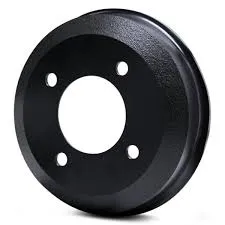
-
 Afrikaans
Afrikaans -
 Albanian
Albanian -
 Amharic
Amharic -
 Arabic
Arabic -
 Armenian
Armenian -
 Azerbaijani
Azerbaijani -
 Basque
Basque -
 Belarusian
Belarusian -
 Bengali
Bengali -
 Bosnian
Bosnian -
 Bulgarian
Bulgarian -
 Catalan
Catalan -
 Cebuano
Cebuano -
 Corsican
Corsican -
 Croatian
Croatian -
 Czech
Czech -
 Danish
Danish -
 Dutch
Dutch -
 English
English -
 Esperanto
Esperanto -
 Estonian
Estonian -
 Finnish
Finnish -
 French
French -
 Frisian
Frisian -
 Galician
Galician -
 Georgian
Georgian -
 German
German -
 Greek
Greek -
 Gujarati
Gujarati -
 Haitian Creole
Haitian Creole -
 hausa
hausa -
 hawaiian
hawaiian -
 Hebrew
Hebrew -
 Hindi
Hindi -
 Miao
Miao -
 Hungarian
Hungarian -
 Icelandic
Icelandic -
 igbo
igbo -
 Indonesian
Indonesian -
 irish
irish -
 Italian
Italian -
 Japanese
Japanese -
 Javanese
Javanese -
 Kannada
Kannada -
 kazakh
kazakh -
 Khmer
Khmer -
 Rwandese
Rwandese -
 Korean
Korean -
 Kurdish
Kurdish -
 Kyrgyz
Kyrgyz -
 Lao
Lao -
 Latin
Latin -
 Latvian
Latvian -
 Lithuanian
Lithuanian -
 Luxembourgish
Luxembourgish -
 Macedonian
Macedonian -
 Malgashi
Malgashi -
 Malay
Malay -
 Malayalam
Malayalam -
 Maltese
Maltese -
 Maori
Maori -
 Marathi
Marathi -
 Mongolian
Mongolian -
 Myanmar
Myanmar -
 Nepali
Nepali -
 Norwegian
Norwegian -
 Norwegian
Norwegian -
 Occitan
Occitan -
 Pashto
Pashto -
 Persian
Persian -
 Polish
Polish -
 Portuguese
Portuguese -
 Punjabi
Punjabi -
 Romanian
Romanian -
 Russian
Russian -
 Samoan
Samoan -
 Scottish Gaelic
Scottish Gaelic -
 Serbian
Serbian -
 Sesotho
Sesotho -
 Shona
Shona -
 Sindhi
Sindhi -
 Sinhala
Sinhala -
 Slovak
Slovak -
 Slovenian
Slovenian -
 Somali
Somali -
 Spanish
Spanish -
 Sundanese
Sundanese -
 Swahili
Swahili -
 Swedish
Swedish -
 Tagalog
Tagalog -
 Tajik
Tajik -
 Tamil
Tamil -
 Tatar
Tatar -
 Telugu
Telugu -
 Thai
Thai -
 Turkish
Turkish -
 Turkmen
Turkmen -
 Ukrainian
Ukrainian -
 Urdu
Urdu -
 Uighur
Uighur -
 Uzbek
Uzbek -
 Vietnamese
Vietnamese -
 Welsh
Welsh -
 Bantu
Bantu -
 Yiddish
Yiddish -
 Yoruba
Yoruba -
 Zulu
Zulu
Feb . 11, 2025 13:36
Back to list
drum brake parts identification
Understanding the intricacies of drum brake parts is essential for anyone involved in vehicle maintenance, whether you are a seasoned professional or an engaged car enthusiast. Drum brakes, though seen as a traditional braking system, are thoroughly reliable and remain in use across various vehicles. The key to maintaining optimum performance involves understanding each component's role and identifying them correctly.
The backing plate forms the foundation of the drum brake assembly. It provides a robust anchor for the brake shoes and other components, along with a dust shield to prevent contaminants from affecting the braking mechanism. Look for signs of corrosion and damage on the backing plate, as these can misalign brake components and lead to uneven wear. Adjustment mechanisms and related hardware, including star wheels and levers, are crucial for maintaining the correct clearance between the brake shoes and the drum. These components help ensure the drum brake performs efficiently and uniformly, and need to be regularly checked for appropriate calibration and wear. Drum brake parts identification should also include an awareness of ancillary components such as the parking brake mechanism, which integrates with the drum brake system for a simple yet effective secondary braking function. Understanding how each part works within this system is essential, especially in cases where parking brake performance is concerned. Trust in drum brake components and their functionality demands a commitment to continual learning and application. Engage with authoritative sources on automotive technology and leverage firsthand experience to hone your expertise continuously. By maintaining a commitment to quality assessment and understanding component interactions, one ensures the credibility and reliability of drum brake maintenance and repairs, fostering a trustworthy reputation in the industry. This expert focus on drum brake parts not only elevates your understanding of these systems but also enhances your ability to communicate effectively about them, thereby improving your SEO standing by providing fresh, authoritative, and high-value content for those seeking insight into drum brake systems.


The backing plate forms the foundation of the drum brake assembly. It provides a robust anchor for the brake shoes and other components, along with a dust shield to prevent contaminants from affecting the braking mechanism. Look for signs of corrosion and damage on the backing plate, as these can misalign brake components and lead to uneven wear. Adjustment mechanisms and related hardware, including star wheels and levers, are crucial for maintaining the correct clearance between the brake shoes and the drum. These components help ensure the drum brake performs efficiently and uniformly, and need to be regularly checked for appropriate calibration and wear. Drum brake parts identification should also include an awareness of ancillary components such as the parking brake mechanism, which integrates with the drum brake system for a simple yet effective secondary braking function. Understanding how each part works within this system is essential, especially in cases where parking brake performance is concerned. Trust in drum brake components and their functionality demands a commitment to continual learning and application. Engage with authoritative sources on automotive technology and leverage firsthand experience to hone your expertise continuously. By maintaining a commitment to quality assessment and understanding component interactions, one ensures the credibility and reliability of drum brake maintenance and repairs, fostering a trustworthy reputation in the industry. This expert focus on drum brake parts not only elevates your understanding of these systems but also enhances your ability to communicate effectively about them, thereby improving your SEO standing by providing fresh, authoritative, and high-value content for those seeking insight into drum brake systems.
Prev:
Next:
Latest news
-
What Are Drum BrakesNewsJul.07,2025
-
Understanding Brake Drum MaterialNewsJul.07,2025
-
Semi-Trailer Brake Drum: A Key Component for Extreme Loads and Long-Distance TransportNewsJul.07,2025
-
Drum Brake Pads for SaleNewsJul.07,2025
-
Brake Drums for SaleNewsJul.07,2025
-
Brake Drum ManufacturerNewsJul.07,2025
-
Aluminum Brake Drums: The Future of High-Performance CarsNewsJul.07,2025
